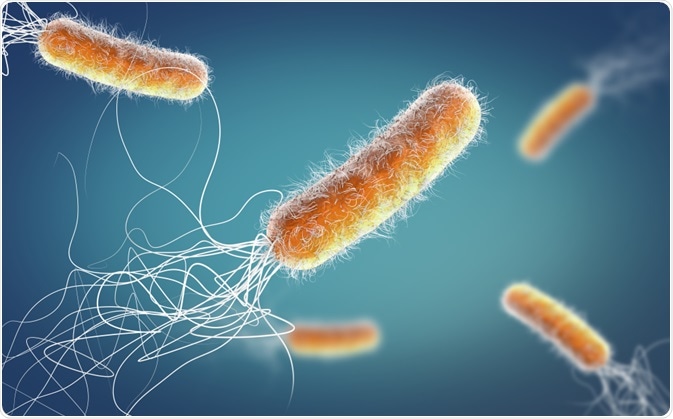The looming concern of antibacterial resistance requires prompt global action to ensure that new antibacterial drugs are continuously being developed against mutating strains of bacteria.
 Image Credit: Christoph Burgstedt/Shutterstock.com
Image Credit: Christoph Burgstedt/Shutterstock.com
During the early 20th century antibiotic discovery was relatively easy, and financial reward encouraged wasteful application. Each year the number of new antibiotics with novel mechanisms of action produced around the world declined as critical need against resistant strains had not yet emerged wide-scale, and many pharmaceutical companies abandoned antibacterial drug discovery programs altogether in the 1980s.
The World Health Organization has deemed that mapping the future with regards to antibacterial drug development is critical to planning against the growing threat of multi-drug resistant bacteria.
Which bacteria are most concerning?
As of 2020, there are 407 unique antibiotics being developed by 314 organizations around the world, most of which are academic institutions or small enterprises with fewer than 50 employees. Around half of the projects are focused broadly on Gram-negative bacteria, while a tenth is concerned broadly with Gram-positive bacteria, and a further tenth intends to develop broad-spectrum antibiotics for both.
Gram-negative bacteria bear an additional lipoprotein membrane that is comparatively difficult for drugs to penetrate, making them traditionally harder to combat than Gram-positive bacteria. As a consequence of this membrane, most of the drugs intended to treat these bacteria target external features such as the cell membrane. The remaining projects focus on developing antibiotics for specific pathogens, most of which also happen to be Gram-negative.
The World Health Organization has published a list of antibiotic-resistant priority pathogens, the majority of which are Gram-negative. Hydrophobic drugs may enter bacteria directly via diffusion through the cell membrane, while hydrophilic drugs must enter by pores and other cell entry mechanisms, limited by size and structure.
Adaptation in the additional cell membrane of Gram-negative bacteria towards a less hydrophobic cell membrane or downregulated intake mechanisms can generally induce resistance more strongly than observed in Gram-positive bacteria, resulting in three of the former being listed as critical priority by WHO: Acinetobacter baumannii, Pseudomonas aeruginosa, and Enterobacteriaceae, all involved in catheter-related bloodstream infections.
These bacteria bear additional mutations that cause them to express antibiotic inactivating enzymes alongside upregulated efflux pumps, modified permeability, and altered target structure.
Carbapenem is an important antibiotic that is used to treat high-risk bacterial infections and is reserved for use against multidrug-resistant bacteria. Enterobacteriaceae resistance towards this drug is currently around 2-7%, while 20-40% of P. aeruginosa and 40-70% of A. baumannii strains observed are resistant.
New antibacterial approaches
Almost half of these drugs are traditional direct-acting small molecules that interact with the bacteria in some debilitating way, 72% of which aim at novel biological targets that currently available drugs do not exploit.
Novel targets, however, may carry unpredicted safety concerns, and many spend long periods in clinical trials before failure. One example is LpxC inhibitors, which have been explored since the 1980s and prevent the synthesis of an important lipid in the bacterium, though have failed many trials due to adverse events including acute kidney injury.
The remainder of the drugs in development exert antibacterial activity by a variety of mechanisms: potentiators that sensitize the pathogen towards innate antibodies or other drugs, phage agents that infect pathogenic bacteria with a virus, and nanoparticles that induce apoptosis with little chance of resistance developing, to name a few.
Antibody-based therapies tend to be highly specific due to the nature of the technology, thus the development of broad-spectrum antibodies against bacteria has been unsuccessful so far. Only three have been approved for clinical use, which target the toxins produced by Clostridium botulinum, Bacillus anthracis and Clostridium difficile, respectively.
Antibodies have shown little benefit when administered prophylactically, among the 27 other vaccines in development in the global preclinical pipeline. Indeed, most target pathogens have been deemed inappropriate for vaccine development due to the rapidly mutating nature of multi-drug resistant bacteria.
Most of these vaccines target highly specific and rare strains that are less likely to undergo significant mutation, though five are in development against Staphylococcus aureus, a very common drug-resistant infection.
The development of broad-spectrum antibiotics that do not induce further resistance, and therefore do not require constant modification and careful monitoring of use, is the ultimate aim in the fight against multidrug-resistant bacteria.
Therapies that directly destroy the cell membrane, genome, or other essential cellular machinery have been shown to be very difficult for rapidly dividing and mutating cells to develop resistance against, both in bacteria and in cancers. These cellular components could be damaged by heat, high-energy radiation, the local presence of reactive oxygen species, or a number of other mechanisms that can be facilitated by modern alternate non-small-molecule pharmaceuticals.
Nanoparticles constructed from metals and polymers have been widely explored in this regard, in some cases combined as delivery agents for protein and gene therapy approaches that intend to co-opt or correct the cell mutations for therapeutic purposes.
Sources
- Breijyeh, Z., Jubeh, B. & Karaman, R. (2020) Resistance of Gram-Negative Bacteria to Current Antibacterial Agents and Approaches to Resolve It. Molecules, 25(6). www.ncbi.nlm.nih.gov/.../
- Theuretzbacher, U., Outterson, K., Engel, A. & Karlen, A. (2020) The global preclinical antibacterial pipeline. Nature Reviews Microbiology, 18(5). https://www.ncbi.nlm.nih.gov/pmc/articles/PMC7223541/
- Singh, R., Smitha, M. S. & Singh, S. P. (2014) The role of nanotechnology in combating multi-drug resistant bacteria. Journal of Nanoscience and Nanotechnology, 14(7). https://pubmed.ncbi.nlm.nih.gov/24757944
Further Reading